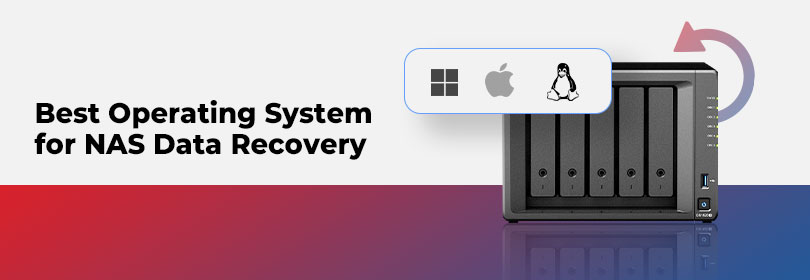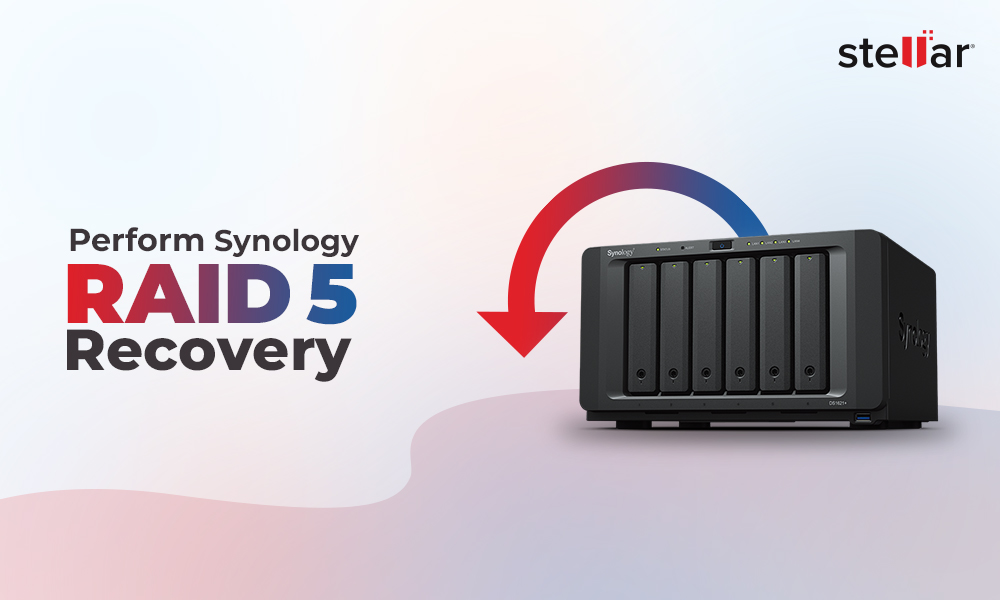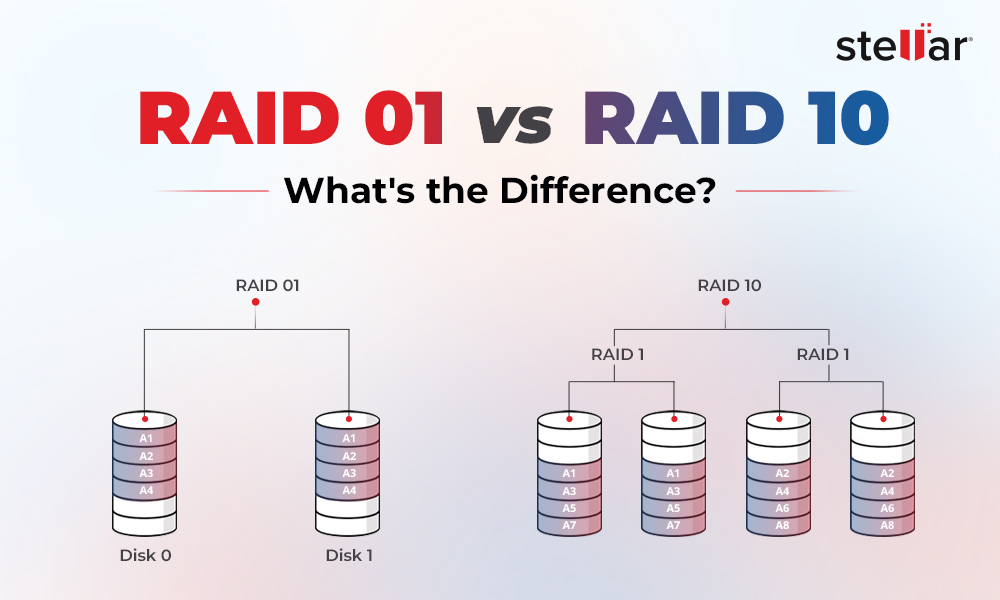Home users and enterprises deploy NAS (Network-Attached Storage) to store and manage uncluttered data to make it easily accessible. With the simplified scripts and the hardware preinstalled with a streamlined OS, the NAS architecture helps improve the networked environments' efficiency.
The Operating System in NAS also allows the configuration of the NAS drives. However, the preinstalled OS in NAS (usually based on Linux or BSD) is limited and not recommended for data recovery, considering the unfamiliarity with algorithms used for retrieving data.
Therefore, choosing the best Operating System for NAS data recovery is crucial. This article guides you through the basics of NAS architecture and the best OS choice for your NAS setup and recovery. Read on to learn more!

Basics of NAS Architecture
NAS is a centralized storage device for a local network. Its architecture comprises hardware (processor, RAID drives, and RAM) and software elements (Operating System). The hardware elements are plugged into the router using an Ethernet cable. On the other hand, the OS and the NAS configuration software manage the network connection. This way, they offer easy access to the data via Network File Sharing protocols.
The NAS OS is lightweight and requires fewer resources than a regular multipurpose OS. Primarily, NAS's OS is based on Linux and BSD. However, as stated previously, these NAS OS may have limitations. Choosing the best NAS Operating System might seem complex, but it is crucial. We've mentioned the top NAS operating systems and their benefits and drawbacks to help you find the best one for your needs.
Best Operating System for NAS
Three primary desktop Operating Systems considered best for setting up NAS are Linux, Windows, and macOS. Although they are all suitable for NAS data recovery, it is essential to consider the associated challenges and difficulties.
Linux
Primarily, NAS vendors integrate the customized OS into Linux-based NAS systems. It is said that the desktop version of Linux supports the NAS file system and RAID metadata used in the NAS systems. It quickly identifies the RAID metadata, builds RAID, mounts RAID drives with their best file systems for NAS, and enables immediate access to NAS data.
However, the drawback of this OS is that it can perform write operations to the NAS file system. This may lead to permanent data loss due to overwriting the existential or allocated space data. Hence, you should only enable read-only rather than read-write while mounting the file system.
Although some retailers extend the file systems to boost NAS's operational speed and performance, desktop Linux may not support such extensions and cause file system errors even in the read-only mode.
The Linux OS kernel and the software RAID version may also be different. Additionally, it can automatically update the RAID metadata. The current NAS configuration may fail to recognize this update. Additionally, it may result in auto-repair of the NAS, destroying the recent RAID configuration and related data.
Windows
Windows OS is the most reliable host OS that protects your data from unexpected customization of OS and RAID metadata updates or other instances. The best part of Windows OS for NAS setup is its broad compatibility with hardware and software and its user-friendly interface. If the data recovery aspect is to be considered, it supports the automated DIY NAS recovery software like Stellar Toolkit for Windows. The software can intellectually identify, mount, and build NAS-based RAID drives and recover data from them efficiently.
macOS
macOS is known for its sleek design, performance, and security. Like Linux, it may identify the RAID structures/metadata by NAS system but cannot read or write to most NFS (NAS File System). Additionally, it can update the RAID structures to the supported configuration. For example, if the macOS updates or resets the RAID 10 to the supported configuration, which can be RAID 0, it will lose all the mirroring information.
How to Choose the Best Operating System for NAS?
Now that you’re aware of the popular NAS operating system, here’s a list of factors that you need to consider while choosing the best one for you.
|
Parameters |
Linux |
Windows |
macOS |
|
Technical Expertise |
Most flexible with many customization features available. However, the complex UI makes it difficult for novice users to set up and manage NAS. |
· Comes with a user-friendly interface. Easy to configure and manage. · Compatible with NAS hardware and software, and other platforms |
Compatibility issues with non-Apple hardware. Lack of dedicated NAS software, making it unsuitable for NAS.
|
|
Functionality & Features |
RAID support, file-sharing protocols, media-streaming capabilities, and more. Although no support for file system extensions. Additionally, there are chances of file-system errors even in the read-only mode. |
RAID support, BTRFS, FAT, and more NAS file system support are available. |
Limited support for basic RAID configurations. However, it’s not ideal for advanced RAID and NAS setups. |
|
Security |
Secure with frequent updates and a focus on open-source security audits. |
Secure when properly configured and updated to the latest version. |
Quite secure. However, it is not ideal for NAS. |
Irrespective of the operating system used in RAID-based NAS, you may still lose data from NAS for many reasons like drive failure, controller malfunction, improper RAID configuration, software corruption, etc. However, if you have the right solution, you can easily recover data from NAS.
How to Recover NAS Data?
The NAS data recovery process requires you to be ready with all the NAS drives and the chosen optimal host operating system. The easiest and safest way to regain your NAS data is using advanced DIY data recovery software, such as Stellar Toolkit for Data Recovery. The software supports recovery of Synology NAS drives with a B-Tree File System (BTRFS).
Additionally, it supports recovery from Windows, Mac, and Linux systems. It intellectually rebuilds the broken or crashed RAID arrays to find lost or deleted data from RAID 0, 5, 6, and nested or hybrid RAID drives. There is a complete guide on recovering data from the Synology NAS server. Find helpful information, including significant reasons for NAS failure, things required before recovering files, and the steps to perform NAS RAID Recovery.
Don’t Forget to Back Up your NAS
Even after successfully recovering data from the NAS, you must keep backing up your NAS device data. Backup is the most basic yet vital way to mitigate data loss after NAS failure. You can either back up on a weekly or daily basis. Additionally, you can use backup software that can automate the entire NAS backup process.
















 6 min read
6 min read





